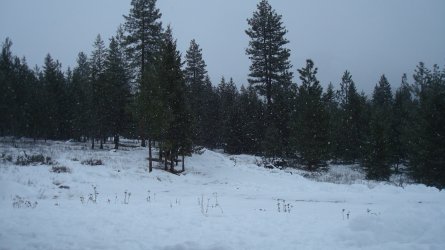Was not just the distance, but she was slow to follow up and her dad kept trying to get her to put "another one" in the elk.
I had some time and so I wrote a lengthy critique of what went right and more importantly what could have been done better with her, but then deleted all that. Since we are killing time and the smoke outside is bad again....
In many things in life that are complex and happen fast, we have a briefing and often a "landing configuration checklist". Much like launching or landing a plane, you must know what you will do at both good and bad pivot points well before you go into the heat of those moments.
There is no time for discussions once the shooting starts. All I want to tell them is if they need a shot placement correction, or the word "again". They should already have the bolt opened and ready to follow up. When there are many elk together, they don't shoot again if they are not positive they are on the same animal. My job is to stop them from shooting the wrong one on a follow up shot when there is pandemonium.
If they are shooting too much gun, their reoil is going cause them to loose track of their sight picture and potentially shoot the wrong animal on a follow up. We don't want a caliber that is too small, or one that is too big. This issue makes it one of those long personal talks where what works for one kid doesn't for another.
Cartridge talk is important, but so is the weight of the gun. The recoil directly affects the odds of hitting the kill zone regardless of the caliber, so the weight of the gun is just as important as ballistic choice.
Sometimes their father puts them on a boomer they cannot handle. The girl might be too timid to argue with her dad. I would rather have the opposite problem and I will still get them into range.
Elk are not magical and can be dropped when shot properly, but they can do magical things once shot wrong. This time, she had all the time in the world, but this is not the time to talk about anecdotes or statistics. There is time at the range to discuss shooting and marksmanship, but once the topic turns to killing it goes on autopilot and needs to be automatic.
As a metaphor that applies to hunting with juniors, it is our responsibility to coach them. When we take a young lady or young man into ballistics or hunting, and we skip them too far ahead without the benefits of fundamentals or allowing them to learn on smaller game etc., then it is the guide's responsibility to give them the mental checklist well before the ammo goes into the guns.
In the heat of the action, they have to fall back on a pre-briefed mental plan or checklist. There is no time to get philosophical or to discuss statistics or terminal ballistics. We owe that elk a clean quick death, and we have to prevent the mental anguish a young lady will go through should she loose a wounded animal.
When adults botch a shot, they have a very bad night and many are very upset the next day if we don't recover their animal. Going home empty is one thing, the nightmare of wounding and loosing an animal is much worse.
Bring enough gun to kill your elk, but only bring the one that you can shoot very very well under realistic conditions. Even if you never get a shot, you still win for the experience.

